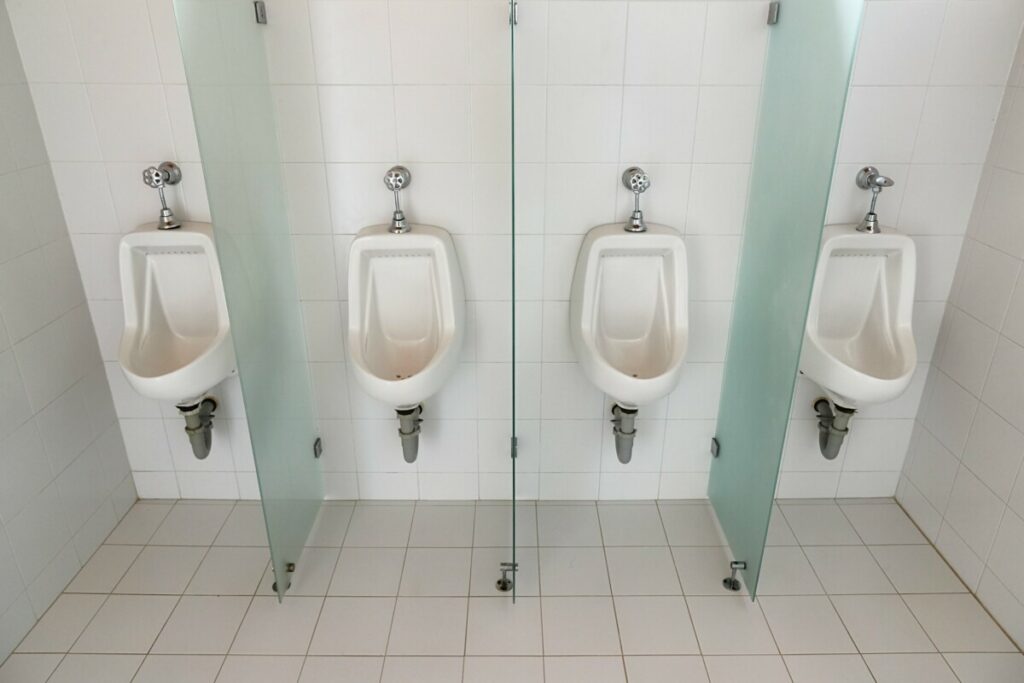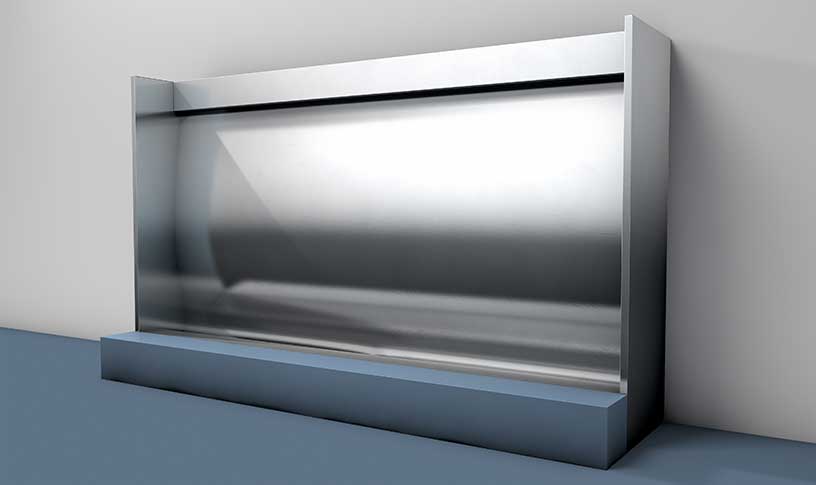Most Common Types Of Urinals
Last Updated on October 5, 2023 by toilethaven
When setting up a communal restroom, whether it be in a private office or a public business, it’s important to install the right type of urinals for the bathrooms.
There are two types of urinals: bowl urinals and trough urinals. Bowl urinals accommodate one person at a time and provide significant privacy to users. Trough urinals can be used by several men at the same time but sacrifice a feeling of privacy. Both types of urinals have pros and cons.
But how do you know what kind of urinal is right for your bathroom space?
Bowl Urinal

In the U.S., bowl urinals are by far the most common kind of urinal, as they are able to fit in small spaces and provide that all-important sense of privacy. They are, as the name would suggest, shaped like a bowl. This category encompasses any urinal that can only be used by one person at a time and is shaped like a bowl.
These urinals are best for places where you can easily anticipate the number of people who will be using the urinals at any given time. Restaurants, department stores, office spaces, and university restrooms all come to mind. They can also be ideal for small public parks.
A bowl urinal costs about $250 without installation. That means that in order to install five bowl urinals, it will likely cost over $1,000 after installation fees, which may be fairly high as each bowl urinal needs to be connected to the plumbing system separately. This can make bowl urinals a very expensive option very quickly.
However, if money is no object and you want to be able to offer privacy, bowl urinals are probably the best option, as many people are more comfortable using bowl urinals.
Trough Urinal

Trough urinals are long, trough-shaped urinals that multiple people can use at the same time. They take up more space than a single bowl urinal but are more space-efficient. Trough urinals work best when the restroom has a significant amount of wall space to hang them on.
While they lack the privacy of bowl urinals, the efficiency of the trough urinal makes it ideal for places where bathroom occupancy is either more unpredictable or tends to stick at a certain high point. Festival grounds, concert venues, campsites, sports stadiums, and other places where the bathrooms are likely to be full fairly often can easily use the increased occupancy that trough urinals can provide.
A trough urinal will usually cost between $1,000 and $3,000. Depending on the number of urinals that your restroom needs, this can end up being less expensive than the equivalent number of single-person urinals, especially considering that a trough urinal is much easier to install.
Since it’s only one urinal, a trough urinal only needs to be attached to the local water supply once. This makes troughs cheaper to install than a whole wall of bowl urinals.
However, trough urinals are somewhat out of date, making them a little harder to buy in the modern day. It turns out that people like the extra privacy provided by bowl urinals enough that most places don’t consider using troughs anymore. This is something to keep in mind while making your decision.
Common Urinal Flush Systems

There are three primary kinds of urinal flush systems: automatic, manual, and timed. Of these, automatic and manual flush systems are the most often used.
Automatic Flush Systems
Automatic flush systems use a sensor of some kind to determine when their most recent user is done going to the bathroom and then flush with no other input. In the past, these urinals used to be a little unreliable, but the modern incarnations of this technology are pretty consistently effective.
These systems have the advantage of being more hygienic than manual flush systems, as people don’t even need to touch the toilet to get it to flush. When combined with sensor-based sinks and soap dispensers, this can help prevent the spread of germs in your restroom.
Plus, because most of these sensors are battery-powered, they will continue working as long as the plumbing continues to function, although the battery will eventually die and need to be replaced.
Manual Flush Systems
Manual flush systems use a lever or button to allow their user to flush the toilet whenever they’re finished. The primary advantage of manual flush systems is that they save water by not having as many false positives as other kinds of flushing systems.
The primary disadvantage is that people actually have to touch whatever device is used to flush the toilet, which can be a little unsanitary if cleaning isn’t done regularly. This should be fine as long as everyone who uses the urinal washes their hands afterward, but considering that these are urinals, it is safe to assume that many people will fail this basic test of hygiene.
However, something has to be said about the manual flush toilet’s ability to save water, as even a few false flushes can waste several gallons of water. Especially if you’re in a desert or a location that faces frequent droughts, this can be an important part of conscientious water use.
Timed Flush Systems
Timed flush systems will flush themselves after a certain interval of time without any kind of input. These systems prevent people from needing to touch the toilet in order to flush, which is good but can waste a lot of water if nobody is around to use them.
Timed flush systems also have the disadvantage of confusing people who want to make sure that the toilet flushes before they leave. With no input method, it’s possible for people to mistake the intended function of a timed flush system and think it is malfunctioning.
Timed flush systems only really work for trough urinals that see heavy use since there aren’t really any easy ways to install either sensors or flushing levers on a trough toilet that will frequently be used by several people at the same time. In other situations, timed flush systems just end up wasting water.